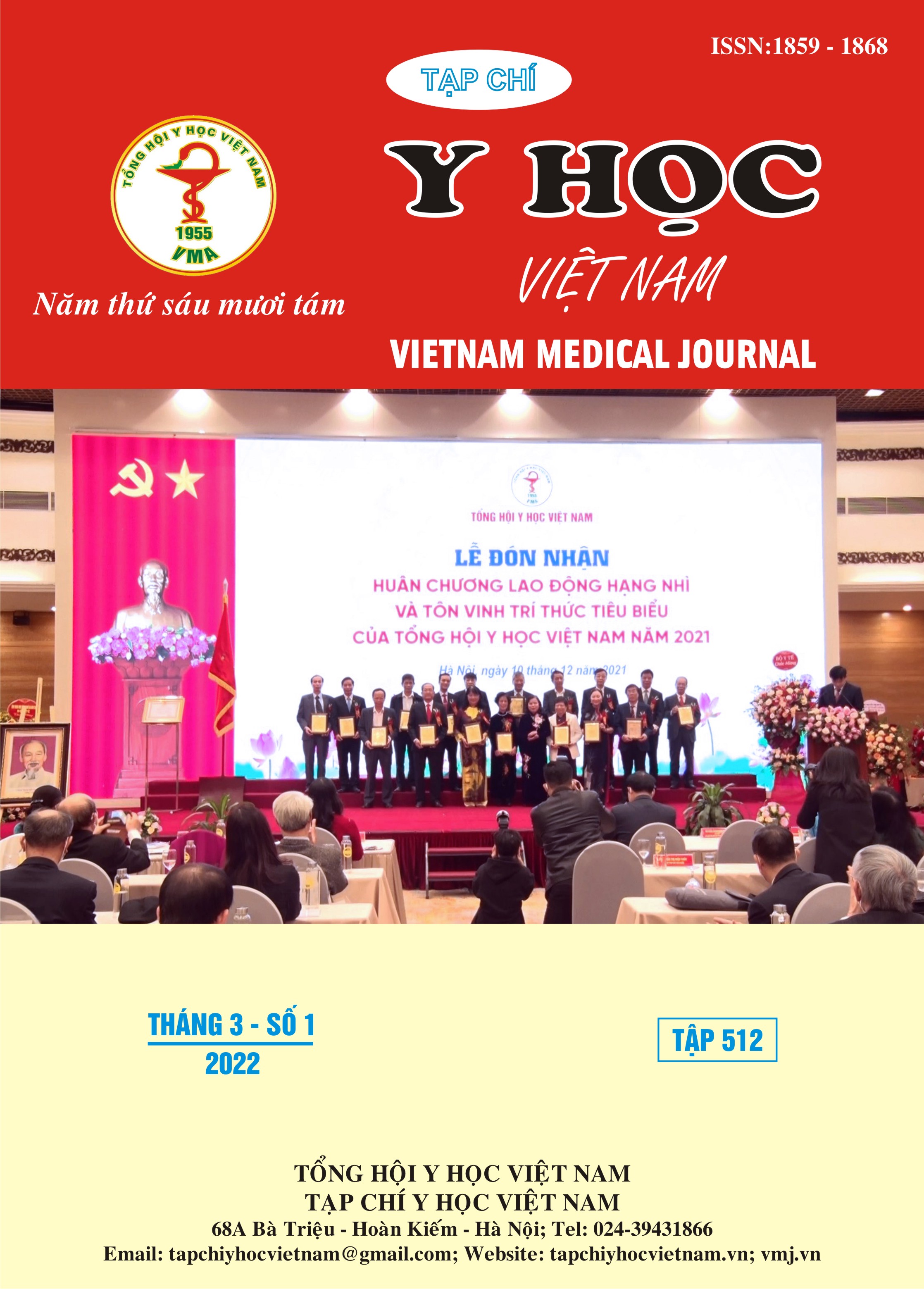CLINICAL FEATURES OF POLYPOIDAL CHOROIDAL VASCULOPATHY
Main Article Content
Abstract
Purpose: To characterize clinical features in polypoidal choroidal vasculopathy (PCV). Materials and methods: Cross sectional study on 43 eyes (41 patients) who were diagnosed with PCV on ICG at Vitreo-retinal Department, VNEH from October 2013 to February 2020. Results: Mean age was 60.49 ± 9.21 years old. There were 21 male patients, 20 female patients. The most common risk factor was high blood pressure (accounted for 65.9%). Reduced VA was seen in majority of cases (41 eyes - 95,4%). In addition, patients also noted other symptoms of macular syndrome as scotoma (93%), metamorphosia (74,4%), discromatopsia (48,8%) and micropsia (60,5%). The most suggesting sign at the fundus was red-orange nodule that was seen in 23 eyes (53,5%). When seen clinically, Most of them were solitary polyps (22 eyes - 95,6%) and only one case of grape-like polyps. Most of cases had subretinal hemorrhage accounting for 76,7% (33 eyes). Conclusion: Clinical features of PCV included symptoms as blurred vision, scotoma, metamorphosia and fundus signs like subretinal hemorrhage, PED, exudates, and red-orange nodules – the most suggesting feature.
Article Details
Keywords
Polypoidal choroidal vasculopathy, subretinal hemorrhage, red-orange nodule
References
2. Kokame G.T., Liu K., Kokame K.A., et al. (2020). Clinical Characteristics of Polypoidal Choroidal Vasculopathy and Anti-Vascular Endothelial Growth Factor Treatment Response in Caucasians. Ophthalmol J Int Ophtalmol Int J Ophthalmol Z Augenheilkd, 243(3), 178–186.
3. Li Y., You Q.S., Wei W.B., et al. (2014). Polypoidal choroidal vasculopathy in adult chinese: the Beijing Eye Study. Ophthalmology, 121(11), 2290–2291.
4. Cackett P., Yeo I., Cheung C.M.G., et al. (2011). Relationship of smoking and cardiovascular risk factors with polypoidal choroidal vasculopathy and age-related macular degeneration in Chinese persons. Ophthalmology, 118(5), 846–852.
5. Ciardella A.P., Donsoff I.M., and Yannuzzi L.A. (2002). Polypoidal choroidal vasculopathy. Ophthalmol Clin N Am, 15(4), 537–554
6. Kwok A.K.H., Lai T.Y.Y., Chan C.W.N., et al. (2002). Polypoidal choroidal vasculopathy in Chinese patients. Br J Ophthalmol, 86(8), 892–897.
7. Sho K., Takahashi K., Yamada H., et al. (2003). Polypoidal choroidal vasculopathy: incidence, demographic features, and clinical characteristics. Arch Ophthalmol Chic Ill 1960, 121(10), 1392–1396
8. Kwok A.K.H., Lai T.Y.Y., Chan C.W.N., et al. (2002). Polypoidal choroidal vasculopathy in Chinese patients. Br J Ophthalmol, 86(8), 892–897


